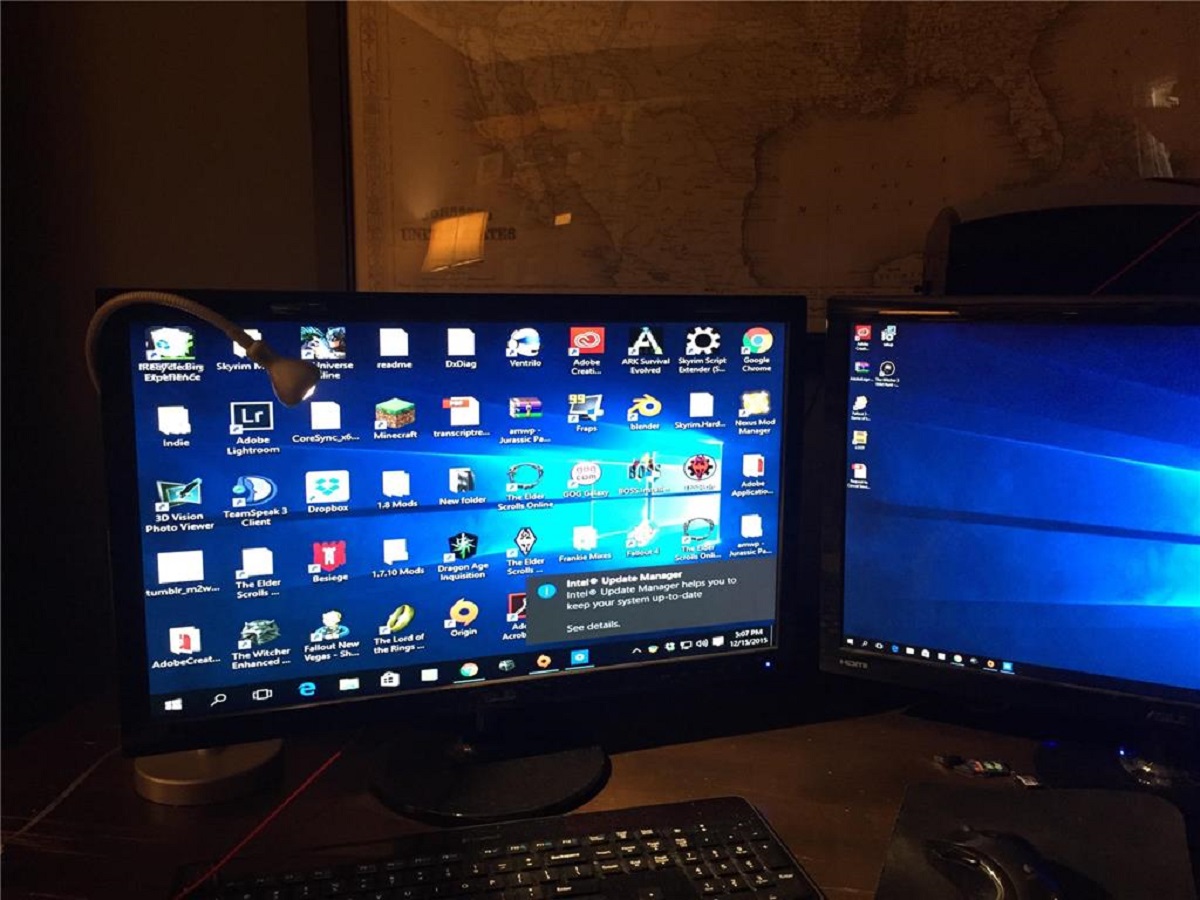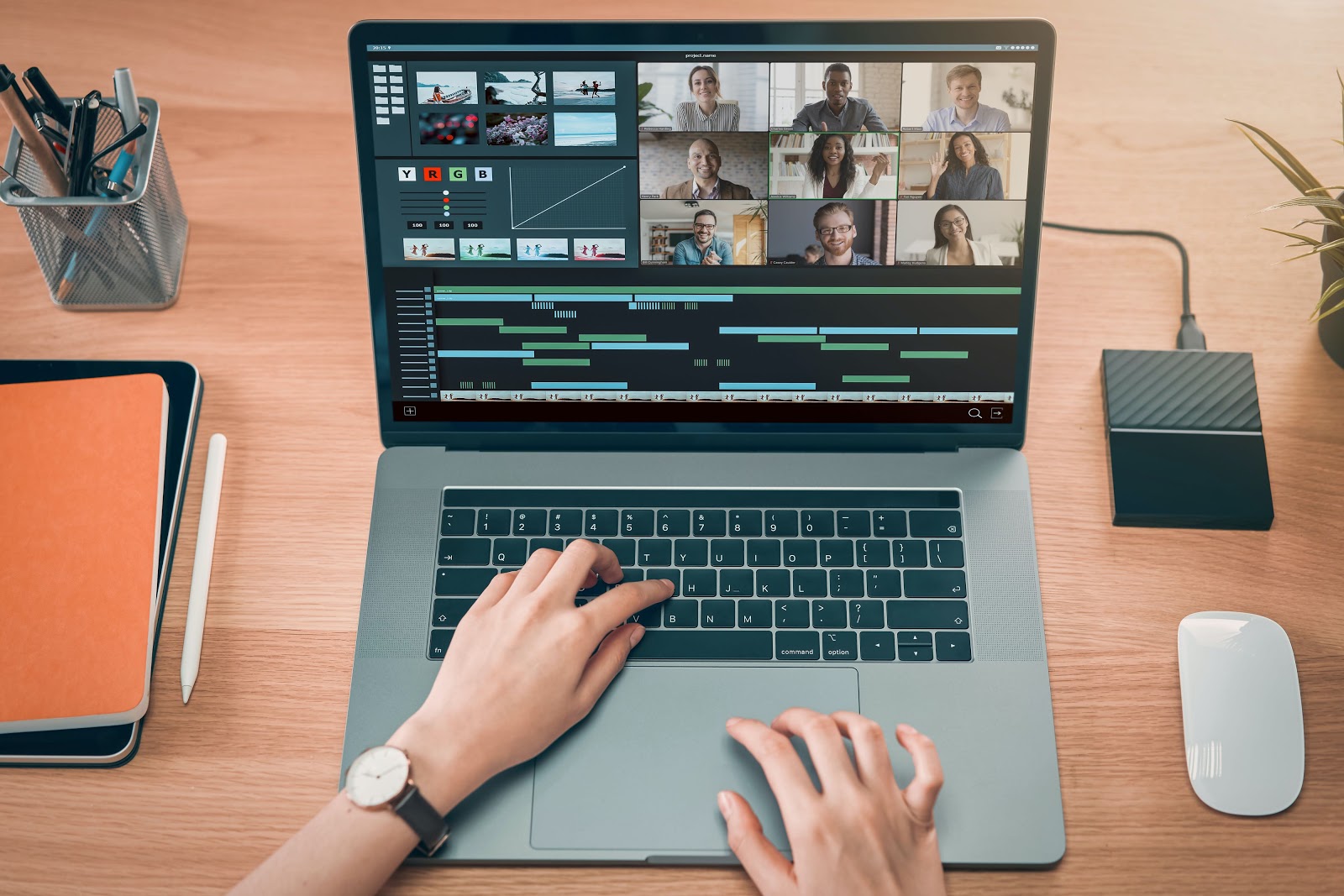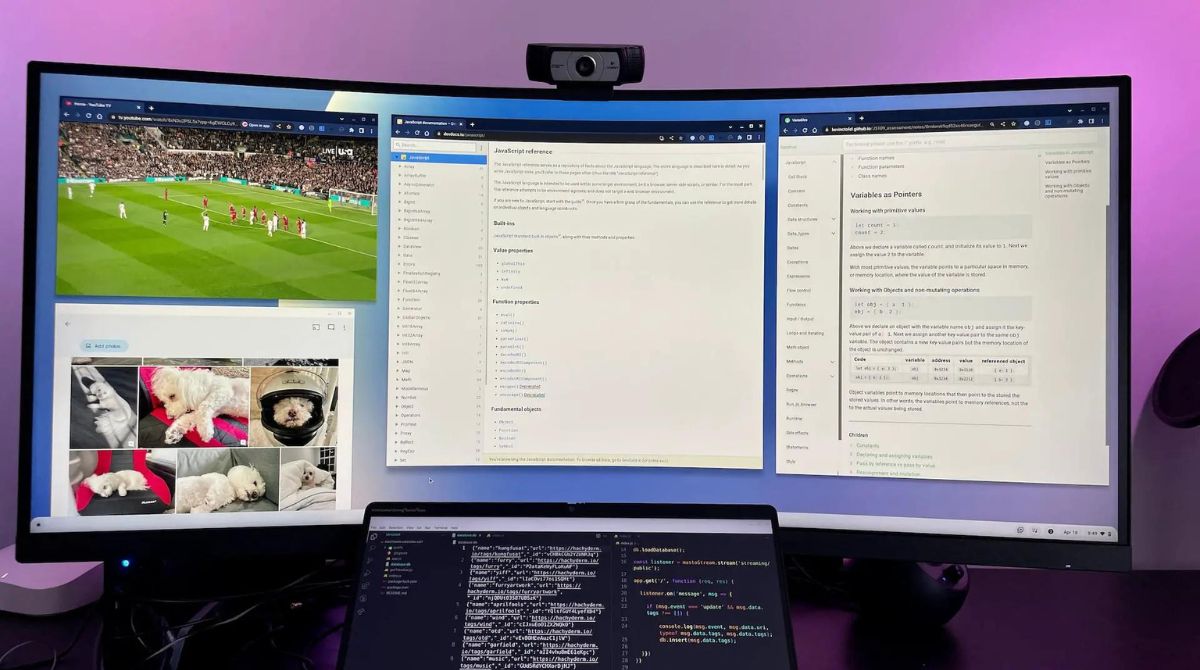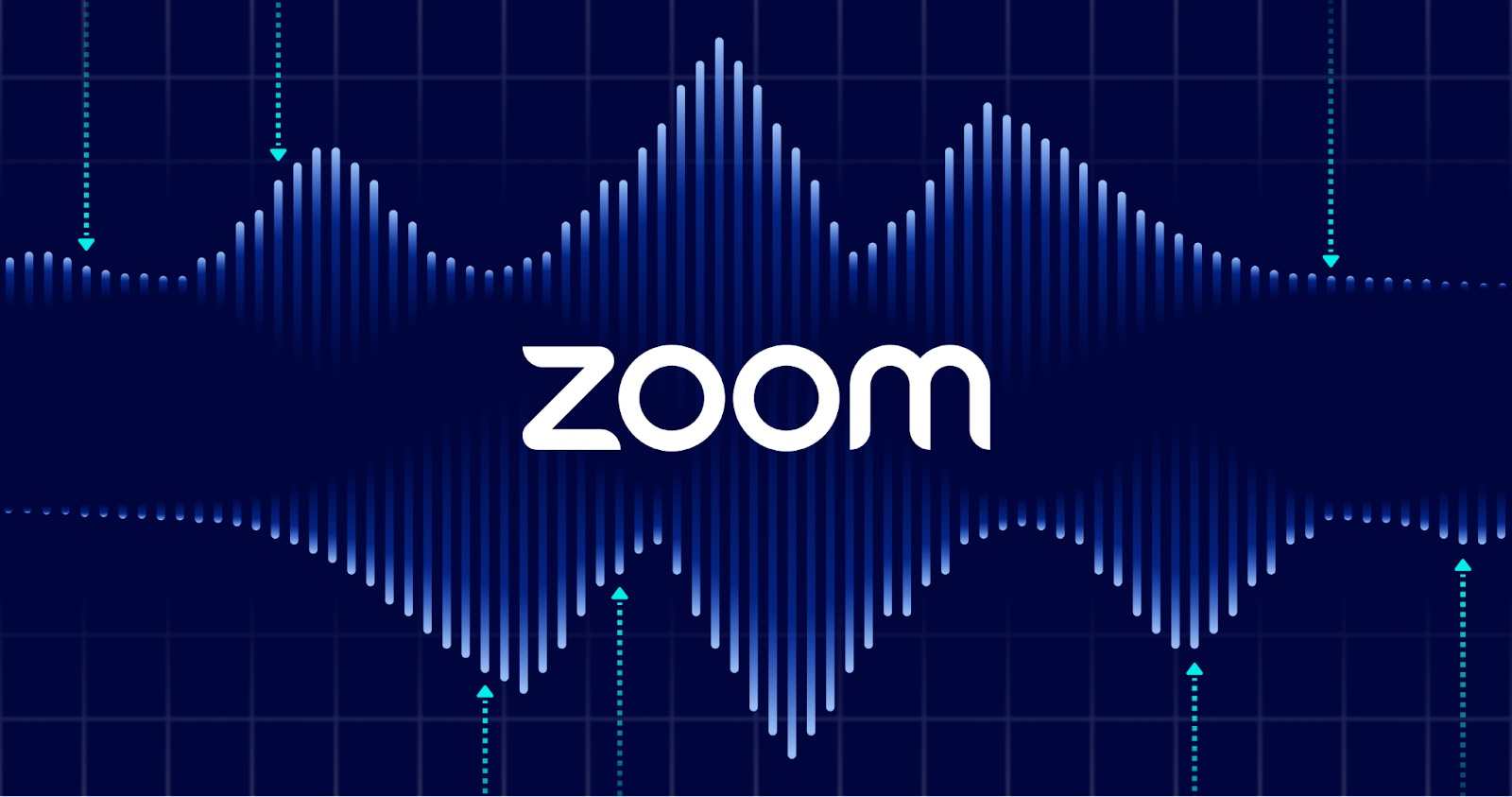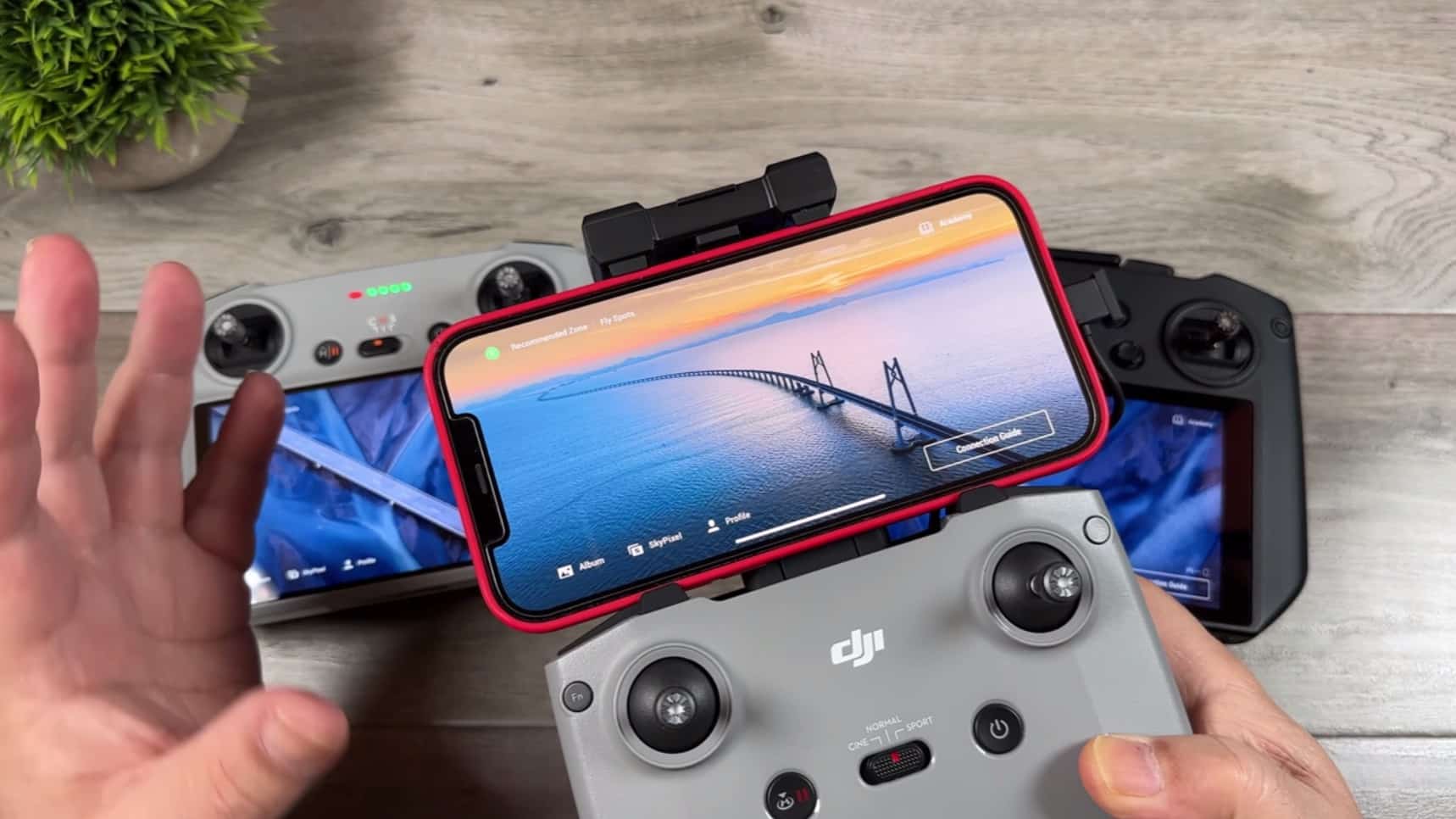Introduction
Having a properly functioning monitor is crucial for a seamless computing experience. However, there are times when you may encounter the frustrating issue of your monitor being zoomed in. This can make the content on your screen appear larger than usual, resulting in a decreased viewing area and potential loss of detail.
Understanding why your monitor is zoomed in is the first step towards resolving the issue. In this article, we will explore the possible causes behind a zoomed-in monitor and provide troubleshooting tips to help you rectify the problem.
Before we delve into the potential causes, let’s briefly touch upon the importance of monitor resolution. The resolution determines the number of pixels displayed on your monitor and is measured by the number of horizontal and vertical pixels (e.g., 1920×1080, commonly known as 1080p). A higher resolution offers a more detailed and sharper display, while a lower resolution can result in pixelation and reduced image quality.
A zoomed-in monitor can significantly impact your productivity and overall visual experience. It can make text, images, and UI elements appear disproportionately large, causing difficulty in navigating and reading content. Additionally, the reduced screen real estate may hinder multitasking and limit the amount of information you can comfortably view at once.
Now, let’s explore the potential causes behind a zoomed-in monitor and the steps you can take to address them. By following the troubleshooting tips outlined in this article, you can regain control over your monitor display and enjoy an optimal computing experience.
The Importance of Monitor Resolution
The resolution of your monitor plays a vital role in determining the quality and clarity of the displayed content. It refers to the number of pixels that can be displayed horizontally and vertically on the screen. Higher resolutions, such as 1080p or 4K, offer sharper and more detailed visuals, allowing for a more immersive viewing experience.
A higher resolution enables text, images, and graphics to appear crisper and more defined, making it easier to read and view intricate details. This is particularly important for tasks that require precision, such as graphic design, video editing, or scientific data analysis. With a higher resolution monitor, you can accurately distinguish between fine lines and fine-tune your work with confidence.
In addition to sharper visuals, a higher monitor resolution also enhances productivity. It provides more screen real estate, allowing you to view and work with multiple windows simultaneously. This is especially beneficial for professionals who need to multitask, such as content creators, programmers, or financial analysts. With more space to spread out your work, you can boost your efficiency and streamline your workflow.
Moreover, a higher resolution monitor provides a more enjoyable multimedia experience. When watching movies, playing games, or viewing photos, a higher resolution allows for more vibrant colors, smoother gradients, and greater detail. You can immerse yourself in the richness of the visuals, appreciating the nuances that may otherwise go unnoticed on a lower resolution display.
It is worth noting that while a higher resolution is generally desirable, it may require a more powerful graphics card to support the increased pixel count. High-resolution displays demand greater processing power and memory from the graphics card to render images smoothly. Therefore, it is important to ensure that your graphics card is capable of handling the desired resolution to avoid potential performance issues.
In summary, monitor resolution plays a crucial role in the overall visual experience and productivity levels. A higher resolution monitor offers sharper and more detailed visuals, allowing you to work with precision and enjoy multimedia content to its fullest. Understanding the importance of monitor resolution can help you make informed decisions when purchasing a new monitor or troubleshooting issues related to screen display.
Causes of a Zoomed-In Monitor
When your monitor is zoomed in, it can be frustrating and impact your overall user experience. Understanding the potential causes behind this issue can help you identify and resolve the problem. Let’s explore some of the common causes of a zoomed-in monitor:
1. Incorrect Display Settings: One of the primary reasons for a zoomed-in monitor is incorrect display settings. This could be due to accidental changes in display settings or misconfigurations. Adjustments to the screen resolution, aspect ratio, or scaling settings can cause the content to appear larger than intended, resulting in a zoomed-in effect.
2. Compatibility Issues with Graphics Card: Another possible cause is compatibility issues between your monitor and graphics card. Outdated or incompatible graphics drivers may not support the optimal display settings for your monitor, leading to an incorrect zoom level. It is essential to ensure that your graphics card is compatible with your monitor and that you have the latest drivers installed.
3. Outdated or Incompatible Drivers: Outdated or incompatible drivers, not just for the graphics card but also other relevant components such as the monitor or motherboard, can cause issues with the display. These outdated drivers may not be optimized to work with your specific configuration, leading to a zoomed-in monitor or other visual abnormalities.
4. Hardware Issues: In some cases, hardware issues can contribute to a zoomed-in display. Faulty cables, loose connections, or problems with the monitor itself can affect the transmission of the display signal, resulting in an incorrect zoom level. It’s worth checking the hardware components and connections to rule out any potential issues.
Identifying the cause of a zoomed-in monitor is crucial for implementing the appropriate troubleshooting steps. In the next section, we will explore various troubleshooting tips that can help you resolve this issue and get your monitor back to the correct display settings.
Incorrect Display Settings
One of the primary reasons for a zoomed-in monitor is incorrect display settings. This can occur due to accidental changes or misconfigurations. Here are some potential issues related to display settings that can cause a zoomed-in monitor:
1. Screen Resolution: The screen resolution determines the number of pixels displayed on your monitor. If the resolution is set too low, it can result in a zoomed-in effect where content appears larger than intended. To fix this, right-click on your desktop, select Display Settings, and adjust the resolution to the recommended or desired setting.
2. Aspect Ratio: The aspect ratio refers to the proportional relationship between the width and height of the display. If the aspect ratio is not correctly set, it can distort the display and cause a zoomed-in appearance. Make sure the aspect ratio matches the native ratio of your monitor to avoid any scaling issues.
3. Scaling Settings: Scaling settings control how content is displayed and can affect the zoom level. If scaling options are incorrectly configured, it can result in a zoomed-in or zoomed-out display. Access the display settings in your operating system and adjust the scaling settings to the recommended level or to your preference.
4. Zoom Level in Applications: Some applications have their own zoom settings that can override the system-wide settings. If certain applications appear zoomed-in, check their individual settings to ensure they are set to the desired zoom level. Look for options like “Zoom” or “Display Scaling” within the application itself.
It is essential to explore and adjust these display settings to rectify a zoomed-in monitor. Take the time to review each setting and ensure it is correctly configured. If the issue persists, proceed to the next troubleshooting steps to check for other potential causes.
In the next section, we will address compatibility issues with the graphics card, which can also contribute to a zoomed-in display.
Compatibility Issues with Graphics Card
A zoomed-in monitor can also be caused by compatibility issues between your graphics card and monitor. Outdated or incompatible graphics drivers may not support the optimal display settings, resulting in an incorrect zoom level. Here are some factors related to graphics card compatibility that can contribute to a zoomed-in display:
1. Outdated Graphics Drivers: Graphics drivers are essential software components that facilitate communication between the graphics card and the operating system. Outdated drivers may not be compatible with the latest display technologies or may lack the necessary optimizations for your specific monitor. Updating the graphics drivers to the latest version can often resolve compatibility issues and correct the zoomed-in display.
2. Incompatible Graphics Card: Some graphics cards may not be fully compatible with certain monitors or their specific display features. This can result in incorrect zoom levels or other visual abnormalities. It’s important to verify that your graphics card is compatible with your monitor and meets the necessary specifications for optimal performance. Check the manufacturer’s website for compatibility information and potential driver updates.
3. Driver Conflicts: Conflicts between different graphics drivers or conflicting software can cause issues with the display. For example, having multiple graphics drivers installed or conflicting software installed can result in a zoomed-in monitor. It’s recommended to uninstall any unnecessary or conflicting drivers or software to resolve compatibility issues.
To address compatibility issues with your graphics card, start by updating your graphics drivers to the latest version available. Visit the manufacturer’s website or use their provided software to download and install the appropriate drivers. This can ensure compatibility with your monitor and fix any potential driver-related issues.
If updating the drivers does not resolve the problem, it may be necessary to consult the manufacturer’s support documentation or contact their customer support for further assistance. They can provide guidance specific to your graphics card model and offer additional troubleshooting steps if needed.
In the next section, we will explore how outdated or incompatible drivers can contribute to a zoomed-in monitor and discuss the steps to address this issue.
Outdated or Incompatible Drivers
Outdated or incompatible drivers, not only for the graphics card but also for other relevant components such as the monitor or motherboard, can cause a variety of display issues, including a zoomed-in monitor. Here are some aspects related to outdated or incompatible drivers that can contribute to this problem:
1. Graphics Card Drivers: Graphics card drivers are responsible for enabling your graphics card to communicate with the operating system and render images on your monitor. Outdated or incompatible graphics card drivers may not support the optimal display settings for your monitor, resulting in a zoomed-in display. Updating the graphics card drivers to the latest version can often resolve compatibility issues and rectify the zoomed-in monitor problem.
2. Monitor Drivers: Monitor drivers are specific software packages that allow your operating system to communicate with your monitor and utilize its full capabilities. Outdated or incompatible monitor drivers can lead to incorrect display settings, including a zoomed-in effect. It is recommended to check the manufacturer’s website for the latest monitor drivers and install them to ensure proper functionality.
3. Motherboard Drivers: The motherboard drivers, particularly the chipset and integrated graphics drivers, are crucial components for the smooth operation of your system. Outdated or incompatible motherboard drivers can interfere with the graphics card’s functionality, leading to display issues such as a zoomed-in monitor. Keeping your motherboard drivers up to date can help prevent compatibility-related problems.
To address outdated or incompatible drivers, it is essential to update them to the latest versions provided by the respective manufacturers. Most manufacturers offer dedicated software tools or utility programs that can automatically detect and update drivers for your system. Alternatively, you can manually download the latest drivers from the manufacturer’s website and install them.
Before updating drivers, it is recommended to uninstall any existing drivers that may be causing conflicts. This ensures a clean installation and reduces the chances of compatibility issues. It is also advisable to create a system restore point or backup your important files before proceeding with driver updates, as unforeseen issues may arise during the installation process.
By keeping your drivers up to date and ensuring compatibility with your hardware components, you can address any potential driver-related issues, including a zoomed-in monitor.
In the next section, we will explore potential hardware issues that can contribute to a zoomed-in display and discuss troubleshooting steps to identify and resolve them.
Hardware Issues
Hardware issues can also contribute to a zoomed-in monitor. These issues may include faulty cables, loose connections, or problems with the monitor itself. Here are some potential hardware-related causes of a zoomed-in display:
1. Faulty Cables: The cables connecting your computer to the monitor, such as HDMI or DisplayPort cables, can sometimes be the culprit behind a zoomed-in monitor. If these cables are damaged or not securely connected, it can result in a poor signal transmission, leading to display abnormalities. Make sure to check the cables for visible damage and ensure they are properly seated in their respective ports.
2. Loose Connections: Loose connections between the graphics card and the monitor can cause display issues, including a zoomed-in effect. Check that the cable connections are tight and secure at both ends. If using an adapter or converter, ensure it is properly connected and compatible with your monitor and graphics card.
3. Monitor Issues: A malfunctioning or defective monitor can also be the reason behind a zoomed-in display. If you’ve ruled out other potential causes and the issue persists across multiple devices, it’s worth considering the possibility of a hardware problem with the monitor itself. In such cases, contacting the manufacturer’s support or seeking professional assistance may be necessary.
When troubleshooting hardware-related issues, it is advisable to test your monitor with another computer or device. This helps determine whether the problem lies with the monitor or any other component of your system. Additionally, using different cables or ports can help identify potential issues related to faulty connections.
If the issue is determined to be hardware-related, such as a faulty cable or a defective monitor, the appropriate course of action would be to replace the problematic component. If the monitor is under warranty, contact the manufacturer’s support for assistance in resolving the issue.
By addressing hardware-related issues, you can eliminate potential causes of a zoomed-in display and ensure that your monitor functions correctly.
In the next section, we will provide troubleshooting tips to help you address a zoomed-in monitor and optimize your display settings.
Troubleshooting Tips
When facing a zoomed-in monitor, there are several troubleshooting steps you can take to identify and resolve the issue. Here are some helpful tips:
1. Adjusting Display Settings: Start by accessing the display settings on your computer. Ensure that the screen resolution, aspect ratio, and scaling options are set correctly. Adjust them if necessary to align with your monitor’s native settings and your personal preferences.
2. Updating Graphics Card Drivers: Outdated or incompatible graphics card drivers can contribute to a zoomed-in display. Visit the website of your graphics card manufacturer or use their provided software to download and install the latest drivers. This can resolve compatibility issues and ensure optimal performance.
3. Checking for Hardware Issues: Inspect the cables and connections between your computer and monitor. Ensure that they are securely connected and undamaged. Try using different cables or ports to rule out any potential hardware issues that could be causing the zoomed-in display.
4. Testing with Another Device: Connect your monitor to another device, such as a laptop or another computer, to determine if the issue is specific to your primary system. If the monitor works fine with another device, it indicates that the problem lies within your computer system and not the monitor itself.
5. Resetting Monitor Settings: Most monitors have an option to reset to factory settings. This can help eliminate any misconfigurations or custom settings that might be causing the zoomed-in display. Refer to the monitor’s user manual or menu options to perform a reset if available.
6. Updating Operating System: Keeping your operating system up to date can help fix software-related issues that may affect your display. Install the latest updates and patches for your operating system, as these often include bug fixes and compatibility improvements.
By following these troubleshooting tips, you can identify and resolve the issue causing your zoomed-in monitor. It is important to remember that not all solutions may work for every situation. If the problem persists, it may be necessary to seek assistance from the manufacturer’s support or consult with a professional technician.
In the next section, we will provide a brief recap of the troubleshooting steps discussed in this article to help you resolve a zoomed-in monitor.
Adjusting Display Settings
When faced with a zoomed-in monitor, one of the first troubleshooting steps is to adjust the display settings on your computer. By fine-tuning these settings, you can often rectify the zoomed-in effect and restore your monitor to its correct display. Here are some key aspects to consider when adjusting display settings:
1. Screen Resolution: The screen resolution determines the number of pixels displayed on your monitor. If the resolution is too low, it can result in a zoomed-in appearance where content appears larger than intended. To adjust the screen resolution, right-click on your desktop and select Display Settings (Windows) or System Preferences > Displays (Mac). From there, choose the appropriate resolution that matches your monitor’s native settings or your preferred viewing experience.
2. Aspect Ratio: The aspect ratio refers to the proportional relationship between the width and height of the display. If the aspect ratio is set incorrectly, it can distort the display and contribute to a zoomed-in effect. In the display settings, ensure that the aspect ratio matches your monitor’s native ratio, such as 16:9 or 4:3, to maintain the correct proportions and prevent scaling issues.
3. Scaling Options: Scaling options control how content is displayed on your monitor. If scaling is set too high, it can result in a zoomed-in display, making everything appear larger. Conversely, setting scaling too low can cause a zoomed-out effect, making content appear smaller. Access the display settings on your operating system and adjust the scaling options to the recommended level or to your preference.
4. Individual Application Settings: Some applications have their own zoom or display scaling settings that can override the system-wide settings. If certain applications appear zoomed-in, check their individual settings to ensure they are set to the desired zoom level. Look for options like “Zoom” or “Display Scaling” within the application itself and adjust them as needed.
As you adjust the display settings, remember to apply the changes and observe the impact on your monitor’s display. It may take some trial and error to find the optimal settings that eliminate the zoomed-in effect and provide a comfortable viewing experience.
If adjusting display settings does not resolve the issue, proceed to other troubleshooting steps such as updating graphics card drivers or checking for hardware issues. Sometimes, a combination of these steps may be needed to fully address the zoomed-in monitor problem.
In the next section, we will provide guidance on updating graphics card drivers, a crucial step in resolving compatibility issues that can contribute to a zoomed-in display.
Updating Graphics Card Drivers
Updating graphics card drivers is an important step in resolving compatibility issues that can contribute to a zoomed-in monitor. Graphics card drivers serve as a vital link between your graphics card and the operating system, enabling smooth communication and optimal performance. Here’s how to update your graphics card drivers:
1. Identify Your Graphics Card: Before updating your graphics card drivers, determine the make and model of your graphics card. You can typically find this information in the Device Manager (Windows) or About This Mac (Mac) under System Information.
2. Visit the Manufacturer’s Website: Once you have the details of your graphics card, visit the manufacturer’s website. Manufacturers like NVIDIA, AMD, or Intel provide support pages where you can find the latest drivers for your specific graphics card model.
3. Download the Latest Drivers: Locate the driver download section on the manufacturer’s website and search for the appropriate drivers for your graphics card model. Download the latest driver version that is compatible with your operating system.
4. Install the Drivers: Once the driver download is complete, run the installer file and follow the on-screen instructions to install the updated graphics card drivers. It is recommended to choose the “Custom” installation option to perform a clean installation and avoid potential issues.
5. Restart Your Computer: After the driver installation, restart your computer to ensure that the changes take effect. Restarting helps in initializing the newly installed drivers and resolving any conflicts with the previous driver versions.
6. Verify Graphics Card Settings: Once your computer restarts, access the display settings and verify that the graphics card settings are properly configured. Ensure that the resolution, aspect ratio, and scaling options align with your monitor’s native settings and your preferred viewing experience.
Keeping your graphics card drivers up to date is crucial for maintaining compatibility with your monitor and resolving potential issues, including a zoomed-in display. Regularly checking for driver updates and installing them can help ensure optimal performance and enhance your overall computing experience.
If updating your graphics card drivers does not resolve the zoomed-in monitor problem, it may be necessary to explore other troubleshooting steps or seek assistance from the graphics card manufacturer’s support team.
In the next section, we will discuss how to check for hardware issues that may contribute to a zoomed-in display.
Checking for Hardware Issues
If you’re still experiencing a zoomed-in display after adjusting settings and updating your graphics card drivers, it’s essential to check for any hardware issues that may be causing the problem. Here are some steps to help you identify and address potential hardware-related causes:
1. Inspect Cables and Connections: Begin by examining the cables connecting your computer to your monitor. Look for any visible damage or fraying along the cable and ensure that the connections are secure. Try disconnecting and reconnecting the cables to eliminate any loose connections that could be affecting the display signal.
2. Try Different Cables or Ports: If possible, test your monitor with different cables or ports (e.g., HDMI, DisplayPort, VGA) to determine if the issue lies with a faulty cable or port. Switching to known working cables and ports can help identify and resolve any connectivity problems that may be causing the zoomed-in display.
3. Test with Another Device: Connect your monitor to another computer or device to see if the zoomed-in display issue persists. If the issue is specific to your computer, it suggests that there may be a hardware or software problem with your system. If the monitor works fine with another device, it indicates that the issue lies within your computer and not the monitor itself.
4. Troubleshoot the Monitor: If the zoomed-in display problem persists across multiple devices, it’s worth troubleshooting the monitor itself. Check the monitor’s OSD (On-Screen Display) menu options to ensure that no built-in zoom or scaling settings are enabled. Consult the monitor’s user manual or the manufacturer’s website for specific instructions on troubleshooting and factory resetting the monitor if necessary.
5. Seek Professional Assistance: If you’ve exhausted all troubleshooting options and the zoomed-in display problem persists, it may be necessary to seek professional assistance. Contact the manufacturer’s support team or consult a qualified technician who can diagnose and repair any potential hardware issues with your monitor, graphics card, or computer system.
By checking for hardware issues, you can rule out any physical problems that may be causing the zoomed-in display. If a hardware issue is identified, addressing it accordingly can help resolve the problem and restore your monitor to its normal display.
In the next section, we will provide a brief recap of the troubleshooting steps discussed throughout this article to help you resolve a zoomed-in monitor.
Conclusion
Dealing with a zoomed-in monitor can be frustrating, but with the right troubleshooting steps, you can resolve the issue and restore your monitor to its correct display. Throughout this article, we explored various potential causes of a zoomed-in display, including incorrect display settings, compatibility issues with the graphics card, outdated or incompatible drivers, and hardware problems.
To start troubleshooting, adjust the display settings on your computer, ensuring that the screen resolution, aspect ratio, and scaling options are properly configured. If the issue persists, update your graphics card drivers to the latest version provided by the manufacturer. Additionally, check for compatibility issues between your graphics card and monitor, as well as outdated or incompatible drivers for your graphics card, monitor, or motherboard, and update them accordingly.
If software-related solutions don’t resolve the problem, it’s important to check for hardware issues. Inspect the cables and connections, try different cables or ports, and test your monitor with another device to identify any potential hardware-related causes. If necessary, seek professional assistance for further diagnosis and repair.
By following these troubleshooting steps, you can identify and address the root cause of the zoomed-in monitor issue, allowing you to enjoy a clear and properly displayed screen once again.
Remember, if you’re unsure about any specific steps or encounter difficulties during the troubleshooting process, reach out to the manufacturer’s support team or consult with a professional technician for further guidance and assistance.
We hope that this article has provided you with valuable insights and practical solutions for resolving a zoomed-in monitor. May your computing experience be free from display issues and optimized for productivity and enjoyment.







